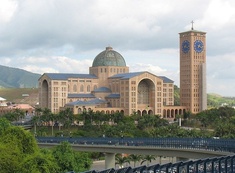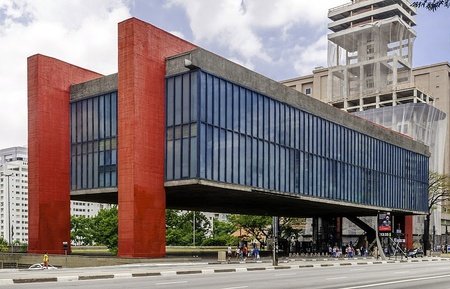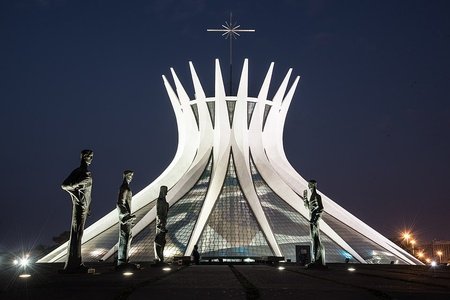
Toponyms of Brazilian Cities #1
Last updated: Friday February 11th, 2022
Report this blog
A little brief contextualization
So, first of all, I must talk about me. I am a Brazilian geographer (ok, maybe not a full geographer right now, but as I am finishing my graduation soon...) and I am very interested in toponymy as a hobby. Toponymy can be very fun sometimes: it gives you the origin of the name a region, river, forest, city, and so on. Was it named a hundred years ago by an engineer? Or five hundred years ago by the native indigenous people? Maybe two thousands years ago by the Romans? But it can also demand lots of investigation to get to the root of that word.
In Brazil, we have 5570 municípios/municipalities (which are the second-level subdivisions of the country). Each estado/state - the first-level subdivisions - has as many municipalities as they want. For example: Minas Gerais has an area of roughly 568.000 km² and 853 municipalities, while Roraima - which is located within the Amazon forest - has an area of about 224.000 km² and only 15 municipalities. The municipalities are defined by having a cidade/city, which is the administrative center, and may or may not have a rural area (there are some small municipalities which are 100% urban, with no rural area at all) and districts (which have a little more autonomy than neighbourhoods, but not enough to be a municipality). The states of South, Southeast and Northeast regions of Brazil have more municipalities, once they were first colonized by Portugal (the closer to the coast, the easier to travel to) and many cities were created in the last 500 years. The states of Central-West and North regions tend to have less municipalities, because their area is too remote (in the middle of Cerrado, the Brazilian savanna, or of the Amazon rainforest) and was inhospitable for most of Brazil history (I could do a post about that, but not sure if Brazilian colonization history would be that fun to people from other countries).
After giving this starting information, let's go to the toponyms. The Brazilian municipalities' names (even though a cidade and a município are not the same thing, município is a very technical term. In colloquial speaking, we just call them as cidades. So, I will probably use both terms on the text as synonyms) have a great variety of origins. I will focus on the ones that seem to be the more frequent ones: cities named after religion, cities with indigenous name (which are frequently referring to rivers, terrain or animals), cities named after people and cities named after companies (this one will be the last one, to see if I can lure anyone to read and discover how a company can be namesake for a city in Brazil haha). Some cities have longer names, combining two or more origins (I think the main one is the combination of religious name + geographical term, like name of a river or a terrain). Ok, enough of contextualization.
Cities named after religion
I think I do not need to contextualize why Brazil is a very christian country. I mean, Portuguese colonization, right? I guess our hermanos from Ibero-America get it more than anyone, with the bonus of having the unexpected Spanish Inquisition to convert the natives. And that colonization, of course, left many marks on us. Many cities are named either after a saint - which represent 11% of the Brazilian cities, or 621 in total - or something from the Catholic culture (like Mother Mary, the Holy Cross, the Incarnation, the Holy Spirit or even Jesus himself). As I am not allowed to add my own images here on Jetpunk, I will leave this map I made sometime ago with the Brazilian cities named after saints highlighted if anyone has the curiosity of seeing their location.

São Paulo is the biggest city in Brazil and, as it may be obvious, it is named for a saint: St. Paul. Some jetpunkers may also know about the city of Salvador (Saviour), which is famous for its carnival [1]. Saints are also namesake two of the ten biggest municipalities of Brazil: São Gabriel da Cachoeira (St. Gabriel of the Waterfall), in the frontier with Colombia, and São Félix do Xingu (St. Felix of the Xingu - oh, look, an indigenous name! - River). It is really easy to find them on the map I linked before! There is also a region in Southern Brazil called Missões (it is near and contiguous to the Argentinian province of Misiones), where the Jesuits founded many cities during the 16th and 17th centuries to convert the indigenous. Today, it is a religious touristic route, and many cities still preserve the name, like São Paulo das Missões (St. Paul of the Missions).
There are also cities called: Santa Cruz (Holy Cross), like Santa Cruz do Sul (Holy Cross of the South), Santa Cruz de Minas (Holy Cross of Minas Gerais) and Santa Cruz do Capibaribe (Holy Cross of the Capibaribe - oh, look, another indigenous name! - River); Bom Jesus (Good Jesus), and if you watched the 1998 film "Central Station", Josué's father lives in Bom Jesus do Norte (Good Jesus of the North, a fictional city); and Nossa Senhora (Our Lady), like Nossa Senhora Aparecida (Our Lady Revealed, or Our Lady of Aparecida, the patroness of Brazil). Ok, if I would name all the possible examples, this post would be way longer.
São José (St. Joseph), the father of Jesus, is the biggest namesake for cities named after saints. In the 60 cities named after him, he can be dos Campos (St. Joseph of the Fields), do Norte (St. Joseph of the North), do Ouro (St. Joseph of the Gold) or even das Palmeiras (St. Joseph of the Palms). As I said, it is very common to combine a two toponymy origins. I just brought the combinations of religious + terrain, cardinal points, economic activity and flora.
Usually, the cities are named after the Saint of the Day they were founded. For example, São Vicente, a famous coastal city in the state of São Paulo, was founded on January 22nd, day of St. Vincent. And, even if the city does not have the name of a saint, they have a patron saint. The patron of Rio de Janeiro, for example, is St. Sebastian. On the thumbnail of this post, you can see the Basilica of Our Lady of Aparecida, the patroness of Brazil. It is the biggest basilica of the world outside Vatican City [2].
So, basically, religion is very present here in Brazil. Even if the population is less religious nowadays than during the last centuries, it is still a big part of our culture. The cities, specially the ones founded before 1950, were always founded on the proximity of a chapel, which is named after the patron saint of the city. If you want to get to the zero milestone of a Brazilian city, you should ask a citizen "where is the Mother Church of the city located?". And here I finish this post. Hope you like it! I wish to post a #2 blog on this series in a few days.

[1] Funnyfact: there is a great group from Salvador called Olodum, which has two songs, released in 1988, called Madagascar Olodum and Pharaoh, Deity of Egypt. In the songs, they evoke the history of Madagascar - of course, it does not want to be a totally correct History class, but still very nice - and culture of Ancient Egypt - the first stanza is totally about the mythology - to construct two songs against racism and the Apartheid. The whole album, which is called Egito Madagascar, is amazing, it is totally worth the listening if you like percussion.
[2] Here in Brazil, we have a expression that translates something like "this building is like Aparecida!", which people (mainly old ones, but I personally like it) use to talk about some construction that is taking way too long to finish, just like the basilica did. The joke says the basilica will never be finished, since it started in the 1950s and still goes through frequent restorations because "they take so long to restore one part, that when it is finished to other half needs to be restored already!". Of course, it is an anecdote - otherwise, we would call it La Sagrada Familia, right, Barcelonians?! Anyway, the basilica is very beautiful and worth the visitation, even if you are not a catholic.

GALO (não resisti kk)BRASIL, P...Caraca, é uma sensação tão feliz de ver o Brasil sendo representado no RUB, coisa que eu jamais imaginei acontecer. Esse blog tem cara de que vai ter uma sequência, e eu estou contando os minutos para vê-la. E sim, essa questão de município ou cidade é bem distorcida por aqui. Eu mesmo nunca chamei uma cidade pequena de “town” nos comentários, e tem hora que eu falo cidade, município. Eu digo que um município pode ter várias cidades. Gostei da adição de termos em português! Só uma coisinha: corrige quando você disse “Jetpunk” (please don’t ban us, Stewart lol), antes que o Ethaboo apite no seu ouvido (right Ethaboo...?). O “P” é maiúsculo kkkk. E você pode adicionar suas imagens usando HTML. Mas as imagens devem ser suas, devido àquela chatice chamada "direitos autorais" kkkkkk.
And to the rest of readers, comment below: Brasília and Fernando de Noronha are cities (or municipalities, I don’t care) or no? Lol